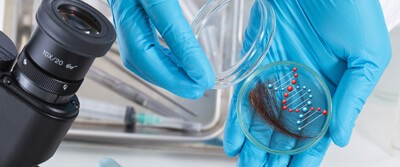Scientists Develop Forensic Method to Identify Humans Using Hair Proteins

By Amanda McCrea
Identifying a person is critical to crime scene investigators, law enforcement and even archeologists. Scientifically, the best way to identify someone is from a DNA sample. However, a new scientific technique may prove otherwise.
DNA vs. Proteins
DNA has been the optimal evidence for identifying humans because it is unique to every person and is inherited from one’s parents. However, environmental conditions such as heat and light can damage DNA and make it useless as an identification tool. DNA molecules also degrade over time, and DNA recovered at a crime scene could be from several people, making it difficult to identify a single person. Scientists at the Lawrence Livermore National Laboratory (LLNL) have developed the first biological technique for identifying a human using the proteins found in hair. Dr. Brad Hart, a chemist at the LLNL, explains that DNA is very fragile, but proteins are chemically more stable. Proteins are chains of molecules formed from amino acids as instructed by your DNA, so there is a connection between DNA and hair proteins.
Using Hair to Make Identifications
This new technique of using hair proteins was developed by Dr. Glendon Parker, a biochemist with the LLNL. He and his team of scientists examined both male and female hair samples from European Americans, African Americans, Kenyans and even skeletal remains from the 18th century. A total of 185 protein markers were found in the hair samples, each of which would be unique in every person.
This method is still in the development phase, but may be an invaluable tool for law enforcement officers and forensic scientists when it is further refined. Dr. Hart believes this method will be a game-changer in the forensic field.
Discussion Questions
- Why is DNA not as dependable as proteins?
- What is a protein marker and how can it be used to identify a person?
- How will this new scientific technique impact forensic scientists? Do you think this technique will be accepted in court? Why or why not?